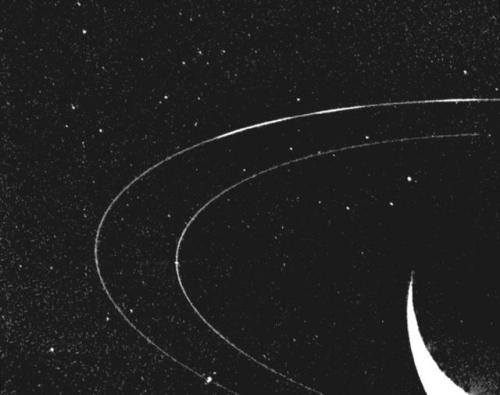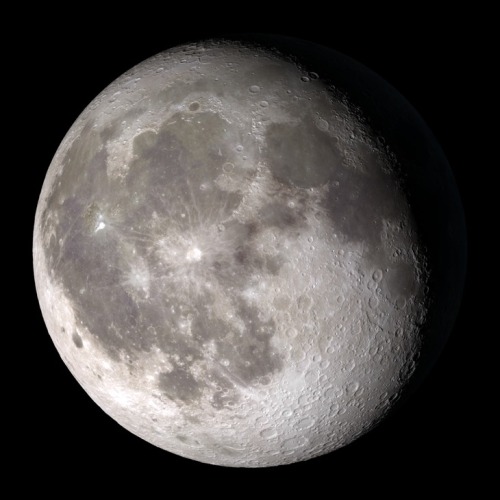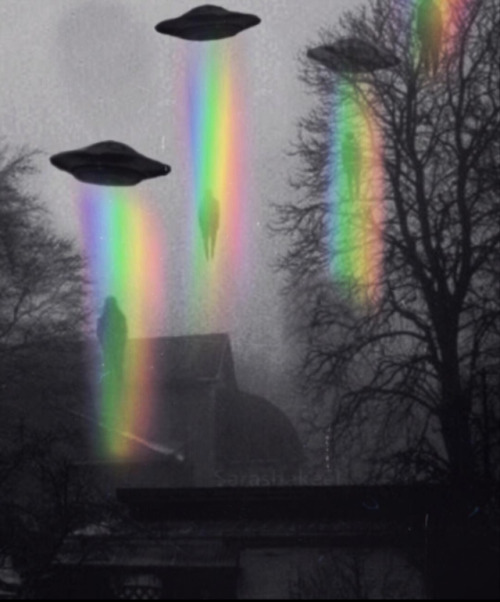Astronomy And Astrophysics: Facts
Astronomy and Astrophysics: Facts
Here is a list of some curiosities of astronomy and astrophysics. From our solar system to interstellar space.

90377 Sedna - Sedna is a large minor planet in the outer reaches of the Solar System that was, as of 2015, at a distance of about 86 astronomical units (AU) from the Sun, about three times as far as Neptune.

Miranda - Miranda’s surface has patchwork regions of broken terrain indicating intense geological activity in Miranda’s past, and is criss-crossed by huge canyons. It also has the largest known cliff in the Solar System, Verona Rupes, which has a height of over 5 km (3.1 mi).

PSR B1257 + 12 - Is a pulsar located 2300 light years from the Sun in the constellation of Virgo.
The pulsar has a planetary system with three known extrasolar planets, named “Draugr” (PSR B1257+12 b), “Poltergeist” (PSR B1257+12 c) and “Phobetor” (PSR B1257+12 d), respectively. They were both the first extrasolar planets and the first pulsar planets to be discovered; b and c in 1992 and c in 1994.

J1407b - J1407b is the first exoplanet or brown dwarf discovered with a ring system by the transit method. The J1407b ring system has an outer radius of about 90 million km (about 640 times the one of Saturn’s rings).

Rain on a Brown Dwarf - Its atmosphere mainly contains gases, including gaseous iron and silicate. At higher temperatures - 3,140 degrees Fahrenheit (2,000 degrees Kelvin) - typical of younger brown dwarfs, iron remains in its gaseous phase. Over time as the incandescent body cools, the iron condenses to form clouds rich in iron and raindrops of liquid iron.

Titan’s Rain - On Saturn’s moon Titan there are lakes and rain just like on Earth, but there the lakes and rains are made up of hydrocarbons (methane and liquid ethane).

Triton - Triton is the largest natural satellite of the planet Neptune, and the first Neptunian moon to be discovered. It is the only large moon in the Solar System with a retrograde orbit, an orbit in the opposite direction to its planet’s rotation. At 2,700 kilometres (1,700 mi) in diameter, it is the seventh-largest moon in the Solar System.

Rings of Neptune - The system consists of five rings that are named after the most relevant astronomers in the Neptune survey. From the inner most to the outer are: Galle, Le Verrier, Lassell, Arago and Adams. They are a system of planetary rings very weak and tenuous, composed mainly of dust and discovered in 1989 by the space probe Voyager 2.

Stars can be born in the winds of supermassive black holes - Artist’s impression of a galaxy forming stars within powerful outflows of material blasted out from supermassive black holes at its core. Results from ESO’s Very Large Telescope are the first confirmed observations of stars forming in this kind of extreme environment. The discovery has many consequences for understanding galaxy properties and evolution.

Seyfert Galaxy - Seyfert galaxies are one of the two largest groups of active galaxies, along with quasars. They have quasar-like nuclei (very luminous, distant and bright sources of electromagnetic radiation) with very high surface brightnesses whose spectra reveal strong, high-ionisation emission lines, but unlike quasars, their host galaxies are clearly detectable.
Sources: wikipedia & eso.org
Images credits: NASA/JPL-Caltech/R. Hurt (SSC-Caltech), University of Western Ontario/Stony Brook University, Ron Miller, David A. Hardy (AstroArt), A. Tayfun Oner, ESO/M. Kornmesser & NASA, ESA & A. van der Hoeven
More Posts from Starsglaxiesspace and Others

The Moon in Motion
Happy New Year! And happy supermoon! Tonight, the Moon will appear extra big and bright to welcome us into 2018 – about 6% bigger and 14% brighter than the average full Moon. And how do we know that? Well, each fall, our science visualizer Ernie Wright uses data from the Lunar Reconnaissance Orbiter (LRO) to render over a quarter of a million images of the Moon. He combines these images into an interactive visualization, Moon Phase and Libration, which depicts the Moon at every day and hour for the coming year.

Want to see what the Moon will look like on your birthday this year? Just put in the date, and even the hour (in Universal Time) you were born to see your birthday Moon.
Our Moon is quite dynamic. In addition to Moon phases, our Moon appears to get bigger and smaller throughout the year, and it wobbles! Or at least it looks that way to us on Earth. This wobbling is called libration, from the Latin for ‘balance scale’ (libra). Wright relies on LRO maps of the Moon and NASA orbit calculations to create the most accurate depiction of the 6 ways our Moon moves from our perspective.
1. Phases

The Moon phases we see on Earth are caused by the changing positions of the Earth and Moon relative to the Sun. The Sun always illuminates half of the Moon, but we see changing shapes as the Moon revolves around the Earth. Wright uses a software library called SPICE to calculate the position and orientation of the Moon and Earth at every moment of the year. With his visualization, you can input any day and time of the year and see what the Moon will look like!
2. Shape of the Moon

Check out that crater detail! The Moon is not a smooth sphere. It’s covered in mountains and valleys and thanks to LRO, we know the shape of the Moon better than any other celestial body in the universe. To get the most accurate depiction possible of where the sunlight falls on the lunar surface throughout the month, Wright uses the same graphics software used by Hollywood design studios, including Pixar, and a method called ‘raytracing’ to calculate the intricate patterns of light and shadow on the Moon’s surface, and he checks the accuracy of his renders against photographs of the Moon he takes through his own telescope.

3. Apparent Size

The Moon Phase and Libration visualization shows you the apparent size of the Moon. The Moon’s orbit is elliptical, instead of circular - so sometimes it is closer to the Earth and sometimes it is farther. You’ve probably heard the term “supermoon.” This describes a full Moon at or near perigee (the point when the Moon is closest to the Earth in its orbit). A supermoon can appear up to 14% bigger and brighter than a full Moon at apogee (the point when the Moon is farthest from the Earth in its orbit).
Our supermoon tonight is a full Moon very close to perigee, and will appear to be about 14% bigger than the July 27 full Moon, the smallest full Moon of 2018, occurring at apogee. Input those dates into the Moon Phase and Libration visualization to see this difference in apparent size!
4. East-West Libration
Over a month, the Moon appears to nod, twist, and roll. The east-west motion, called ‘libration in longitude’, is another effect of the Moon’s elliptical orbital path. As the Moon travels around the Earth, it goes faster or slower, depending on how close it is to the Earth. When the Moon gets close to the Earth, it speeds up thanks to an additional pull from Earth’s gravity. Then it slows down, when it’s farther from the Earth. While this speed in orbital motion changes, the rotational speed of the Moon stays constant.
This means that when the Moon moves faster around the Earth, the Moon itself doesn’t rotate quite enough to keep the same exact side facing us and we get to see a little more of the eastern side of the Moon. When the Moon moves more slowly around the Earth, its rotation gets a little ahead, and we see a bit more of its western side.
5. North-South Libration

The Moon also appears to nod, as if it were saying “yes,” a motion called ‘libration in latitude’. This is caused by the 5 degree tilt of the Moon’s orbit around the Earth. Sometimes the Moon is above the Earth’s northern hemisphere and sometimes it’s below the Earth’s southern hemisphere, and this lets us occasionally see slightly more of the northern or southern hemispheres of the Moon!
6. Axis Angle

Finally, the Moon appears to tilt back and forth like a metronome. The tilt of the Moon’s orbit contributes to this, but it’s mostly because of the 23.5 degree tilt of our own observing platform, the Earth. Imagine standing sideways on a ramp. Look left, and the ramp slopes up. Look right and the ramp slopes down.
Now look in front of you. The horizon will look higher on the right, lower on the left (try this by tilting your head left). But if you turn around, the horizon appears to tilt the opposite way (tilt your head to the right). The tilted platform of the Earth works the same way as we watch the Moon. Every two weeks we have to look in the opposite direction to see the Moon, and the ground beneath our feet is then tilted the opposite way as well.
So put this all together, and you get this:
Beautiful isn’t it? See if you can notice these phenomena when you observe the Moon. And keep coming back all year to check on the Moon’s changing appearance and help plan your observing sessions.
Follow @NASAMoon on Twitter to keep up with the latest lunar updates.
Make sure to follow us on Tumblr for your regular dose of space: http://nasa.tumblr.com.

The end of time looks promising: by Sara Shakeel

Cederblad 90, Gum 3, vdB 94 in HST Palette by John Ebersole
This emission (and reflection) nebula is located at the south wing tip of the Seagull nebula, IC2177, in Canis Major.









❤️😭😊😍




The window for saving the world’s coral reefs is rapidly closing
The world’s reefs are under siege from global warming, according to a novel study published today in the prestigious journal Science
The world’s reefs are under siege from global warming, according to a novel study published today in the prestigious journal Science.
For the first time, an international team of researchers has measured the escalating rate of coral bleaching at locations throughout the tropics over the past four decades. The study documents a dramatic shortening of the gap between pairs of bleaching events, threatening the future existence of these iconic ecosystems and the livelihoods of many millions of people.
“The time between bleaching events at each location has diminished five-fold in the past 3-4 decades, from once every 25-30 years in the early 1980s to an average of just once every six years since 2010,” says lead author Prof Terry Hughes, Director of the ARC Centre of Excellence for Coral Reef Studies (Coral CoE).
“Before the 1980s, mass bleaching of corals was unheard of, even during strong El Niño conditions, but now repeated bouts of regional-scale bleaching and mass mortality of corals has become the new normal around the world as temperatures continue to rise.”
The study establishes a transition from a period before the 1980s when bleaching only occurred locally, to an intermediate stage in the 1980s and 1990s when mass bleaching was first recorded during warmer than average El Niño conditions, and finally to the current era when climate-driven bleaching is now occurring throughout ENSO cycles.
The researchers show that tropical sea temperatures are warmer today during cooler than average La Niña conditions than they were 40 years ago during El Niño periods.
“Coral bleaching is a stress response caused by exposure of coral reefs to elevated ocean temperatures. When bleaching is severe and prolonged, many of the corals die. It takes at least a decade to replace even the fastest-growing species,” explained co-author Prof Andrew Baird of Coral CoE.
“Reefs have entered a distinctive human-dominated era - the Anthropocene,” said co-author, Dr C. Mark Eakin of the National Oceanic & Atmospheric Administration, USA. “The climate has warmed rapidly in the past 50 years, first making El Niños dangerous for corals, and now we’re seeing the emergence of bleaching in every hot summer.” For example, the Great Barrier Reef has now bleached four times since 1998, including for the first time during back-to-back events in 2016 and 2017, causing unprecedented damage. Yet the Australia government continues to support fossil fuels.
“We hope our stark results will help spur on the stronger action needed to reduce greenhouse gases in Australia, the United States and elsewhere,” says Prof Hughes.
IMAGE….A researcher from the ARC Centre of Excellence for Coral Reef Studies surveys the bleached/dead corals at Zenith Reef, Nov 2016. Credit Andreas Dietzel

-
 crown-and-diamonds reblogged this · 8 months ago
crown-and-diamonds reblogged this · 8 months ago -
 crown-and-diamonds liked this · 8 months ago
crown-and-diamonds liked this · 8 months ago -
 42blackcats liked this · 3 years ago
42blackcats liked this · 3 years ago -
 alyssumy liked this · 7 years ago
alyssumy liked this · 7 years ago -
 eternal--stardust-blog reblogged this · 7 years ago
eternal--stardust-blog reblogged this · 7 years ago -
 theskyismadeofpenguins liked this · 7 years ago
theskyismadeofpenguins liked this · 7 years ago -
 thebibliomancer reblogged this · 7 years ago
thebibliomancer reblogged this · 7 years ago -
 atorpheus reblogged this · 7 years ago
atorpheus reblogged this · 7 years ago -
 atorpheus liked this · 7 years ago
atorpheus liked this · 7 years ago -
 autumnsheep liked this · 7 years ago
autumnsheep liked this · 7 years ago -
 dynjay reblogged this · 7 years ago
dynjay reblogged this · 7 years ago -
 orbitutmost liked this · 7 years ago
orbitutmost liked this · 7 years ago -
 riddlerosehearts reblogged this · 7 years ago
riddlerosehearts reblogged this · 7 years ago -
 somebitofeverything reblogged this · 7 years ago
somebitofeverything reblogged this · 7 years ago -
 easternclouds liked this · 7 years ago
easternclouds liked this · 7 years ago -
 thirteen-wolves liked this · 7 years ago
thirteen-wolves liked this · 7 years ago -
 lancia1208 reblogged this · 7 years ago
lancia1208 reblogged this · 7 years ago -
 lancia1208 liked this · 7 years ago
lancia1208 liked this · 7 years ago -
 geezerart reblogged this · 7 years ago
geezerart reblogged this · 7 years ago -
 geezerart liked this · 7 years ago
geezerart liked this · 7 years ago -
 cosmicfeels reblogged this · 7 years ago
cosmicfeels reblogged this · 7 years ago -
 starsglaxiesspace reblogged this · 7 years ago
starsglaxiesspace reblogged this · 7 years ago -
 shikaku-ryoko liked this · 7 years ago
shikaku-ryoko liked this · 7 years ago -
 canes-venatici-1 reblogged this · 7 years ago
canes-venatici-1 reblogged this · 7 years ago -
 heronwalter liked this · 7 years ago
heronwalter liked this · 7 years ago -
 noalobo liked this · 7 years ago
noalobo liked this · 7 years ago -
 temriin liked this · 7 years ago
temriin liked this · 7 years ago -
 big-takeshi liked this · 7 years ago
big-takeshi liked this · 7 years ago -
 spacetimewithstuartgary reblogged this · 7 years ago
spacetimewithstuartgary reblogged this · 7 years ago -
 burningdata95 liked this · 7 years ago
burningdata95 liked this · 7 years ago -
 thecleansoapcompany liked this · 7 years ago
thecleansoapcompany liked this · 7 years ago -
 chet-666 liked this · 7 years ago
chet-666 liked this · 7 years ago -
 adamatlas4669 reblogged this · 7 years ago
adamatlas4669 reblogged this · 7 years ago -
 tobit024 liked this · 7 years ago
tobit024 liked this · 7 years ago